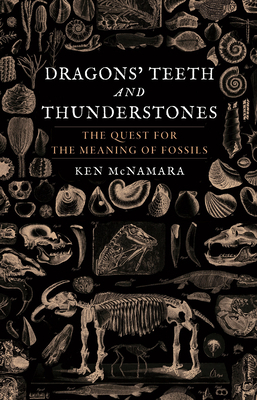
Dragons' Teeth and Thunderstones: The Quest for the Meaning of Fossils
by Ken McNamara
Genres: History, Non-fiction, SciencePages: 288
Rating:

Synopsis:For at least half a million years, people have been doing some very strange things with fossils. Long before a few seventeenth-century minds started to decipher their true, organic nature, fossils had been eaten, dropped in goblets of wine, buried with the dead, and adorned bodies. What triggered such curious behavior was the belief that some fossils could cure illness, protect against being poisoned, ease the passage into the afterlife, ward off evil spirits, and even kill those who were just plain annoying. But above all, to our early prehistoric ancestors, fossils were the very stuff of artistic inspiration.
Drawing on archaeology, mythology, and folklore, Ken McNamara takes us on a journey through prehistory with these curious stones, and he explores humankind's unending quest for the meaning of fossils.
Ken McNamara’s Dragons’ Teeth and Thunderstones is basically a history of how people have related to and understood fossils, how they’ve used them and appreciated them, and the things we’ve believed about them. He discusses a lot of different superstitions, and bits of evidence about how ancient peoples thought about fossils; I’m not always convinced, particularly about the one where the dead five-armed starfish-like creature looks like a human, especially with a hole between its legs. Seems like wishful thinking to me.
In the end it’s an interesting survey, best when McNamara keeps his theories out of it (I’m not sure how wide the agreement is about things like “obviously that was viewed as a human”, but it doesn’t convince me anyway). It has some illustrations so you can see what he’s referring to, though they’re in black and white, so can be a little muddy.
Adrienne Mayor’s books might also be interesting to people who are tantalised by these ideas, particularly The First Fossil Hunters. McNamara spends a lot of time looking a bit further back in the past, beyond the point where we can refer to literature with our questions.
Rating: 2/5
